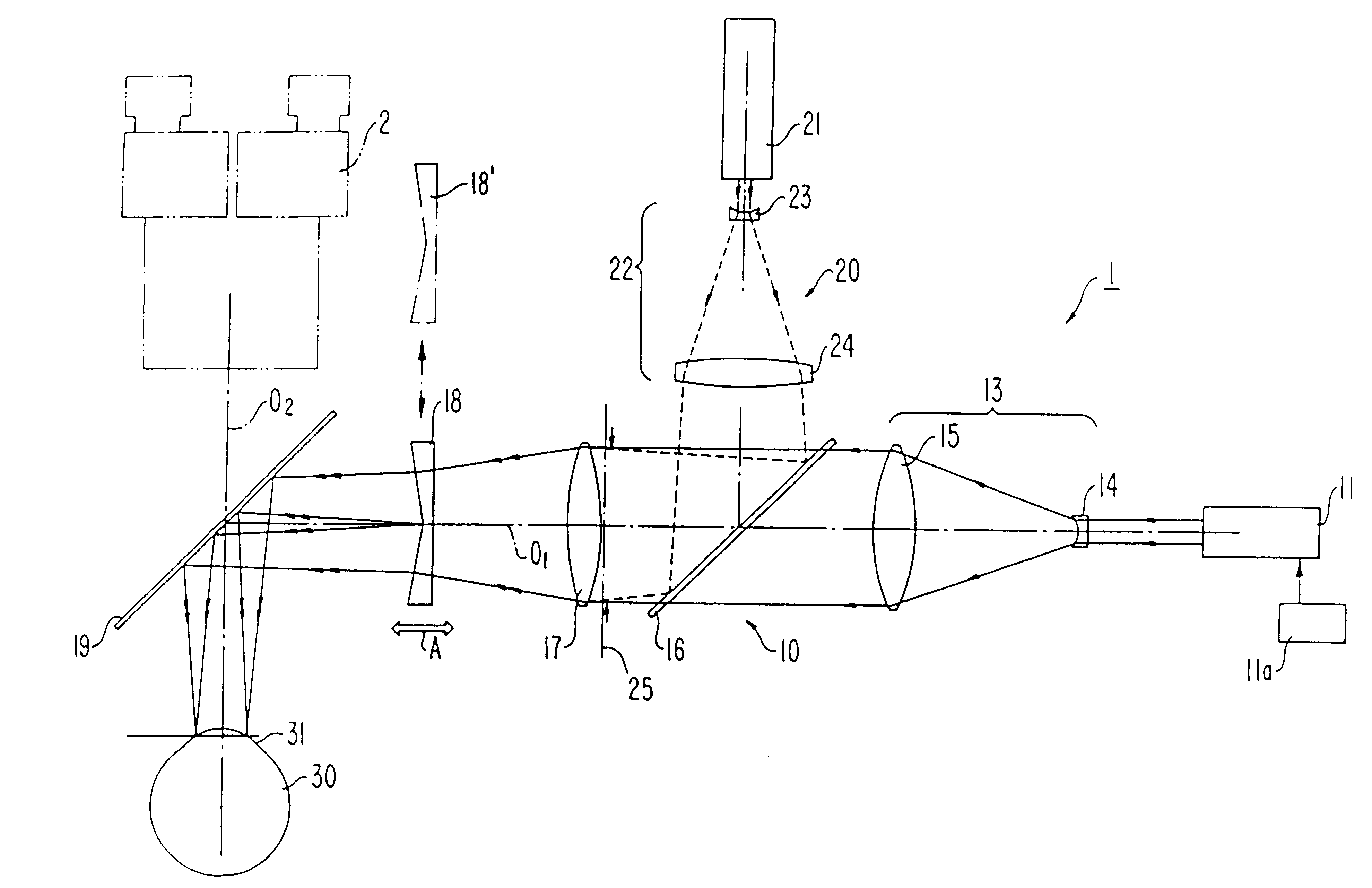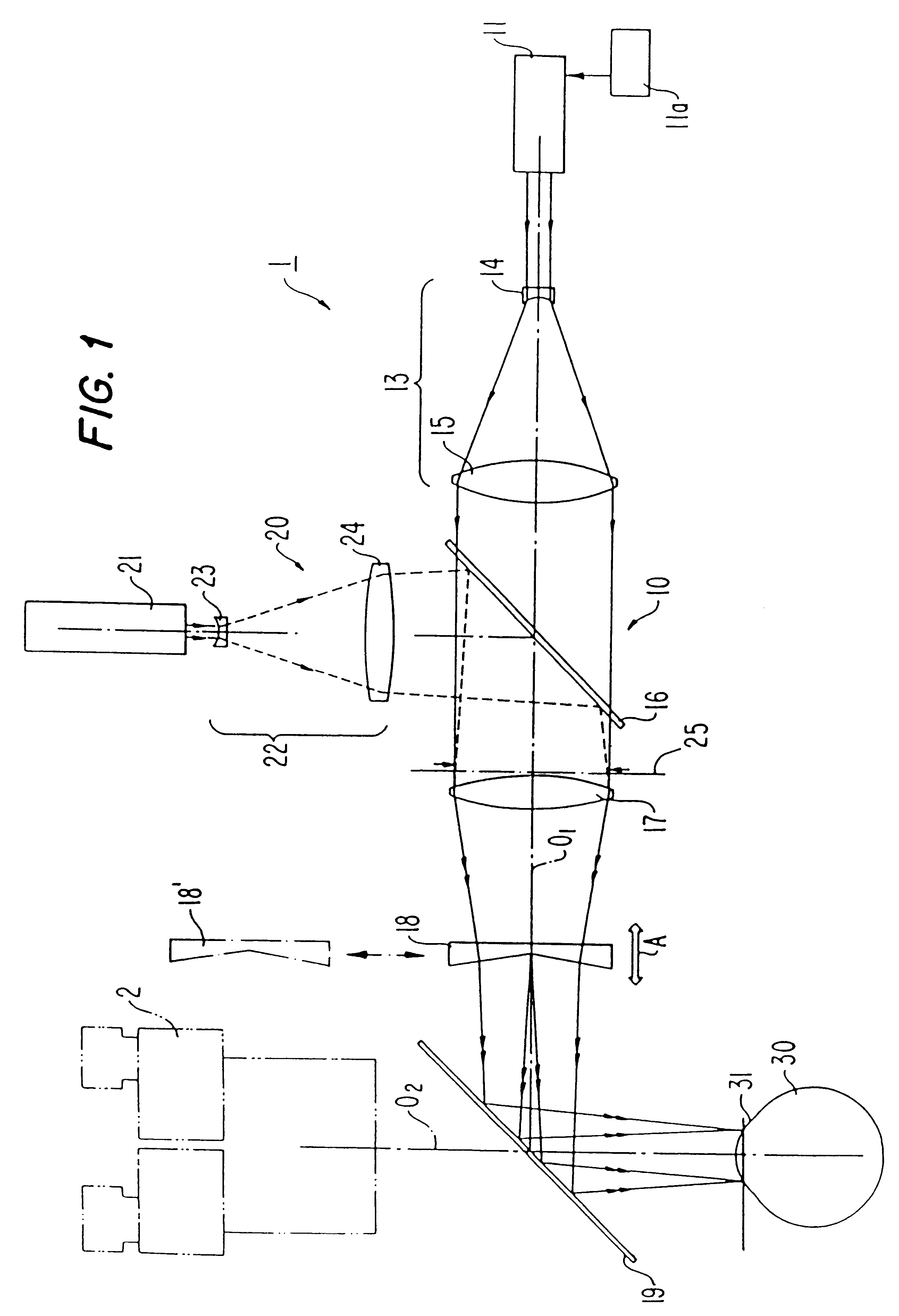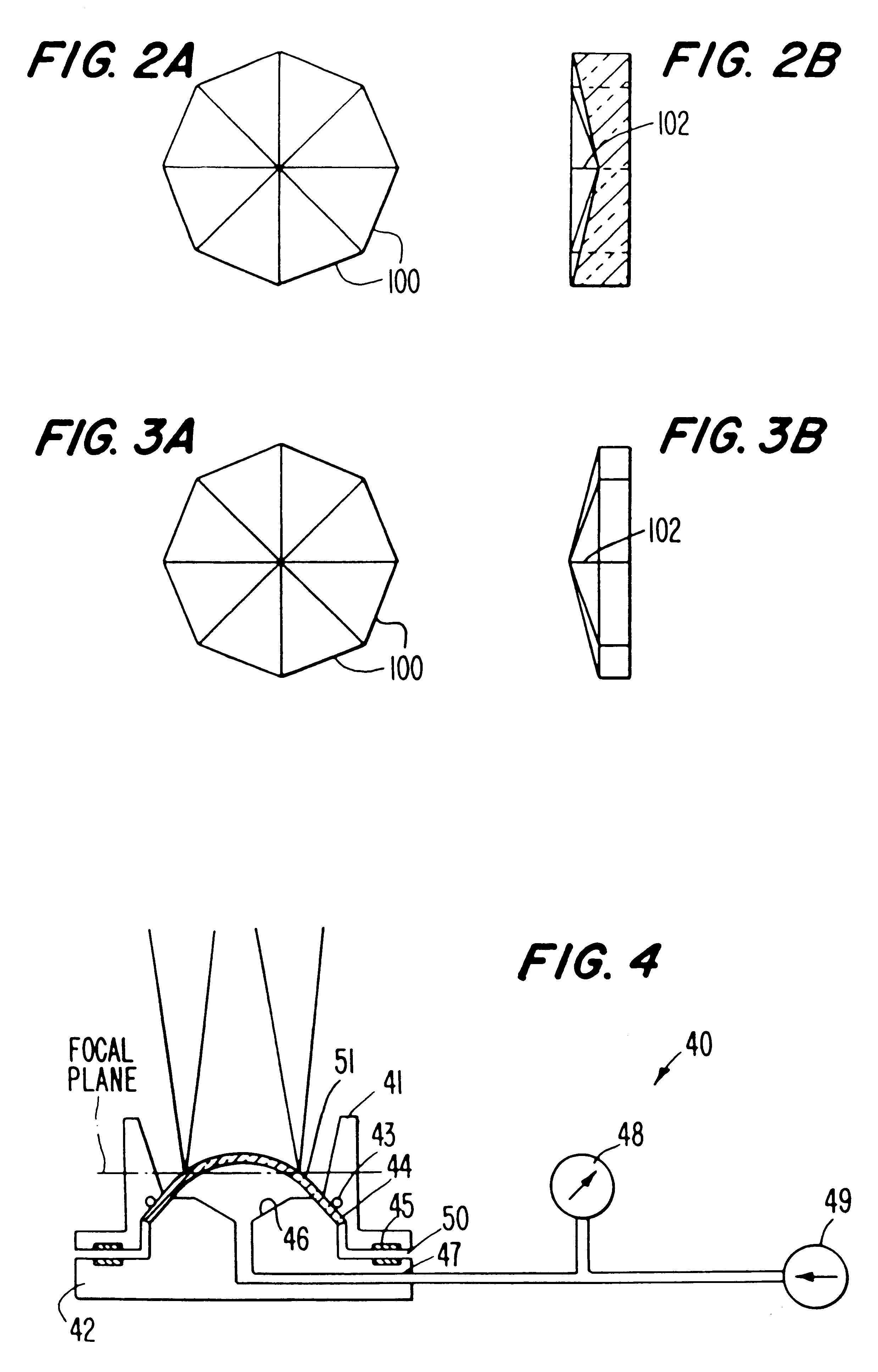Noncontact laser microsurgical method
a non-contact laser and microsurgical technology, applied in the field of microsurgical equipment, can solve the problems of corneal strain, postoperative astigmatism, corneal refractive error, etc., and achieve the effect of eliminating the need for sutures and reducing astigmatism and/or corneal refractive error
- Summary
- Abstract
- Description
- Claims
- Application Information
AI Technical Summary
Benefits of technology
Problems solved by technology
Method used
Image
Examples
first embodiment
In accordance with the present invention, the apparatus includes axicon optical means for forming the converged laser beams into a plurality of paraxially distributed beam spots on the cornea. As embodied herein the axicon optical means may comprise a multiple-facet prismatic ("MFP") lens 18.
As shown in FIGS. 2A and 2B, axicon lens 18 may be configured with concave multiple-facet prisms (eight-facet prisms, for example) whose outer edges (prism bases) 100 are larger in width than the optical axis portion 102 thereof. Axicon lens 18 may also be configured with convex multiple-facet prismatic lenses as shown in FIGS. 3A and 3B whose outer edges (prism bases) 100 are larger in width than optical axis portions 102 thereof. With reference to FIG. 6, the multiple-facet prism function of axicon lens 18 causes the converging laser beams emerging from lens 18 to be formed into a plurality of paraxially distributed beam spots 61 on cornea 31 of eye 30. The spots 61 are radially spaced from th...
second embodiment
In the present invention, a conical axicon lens 18 illustrated with the dot-dash line in FIG. 1 may used in place of MFP axicon lens 18. In such an embodiment the conical axicon lens need not be rotated about optical axis O.sub.1 to perform curved keratotomy because the conical axicon lens converts the laser beams exiting from condensing and focusing lens 17 into annular beams and projects them toward the patient's cornea.
Each of FIGS. 15 and 16 illustrate alternative embodiments of the mask means. In both alternative embodiments of the mask means, two masks are spaced from one another on optical axis O.sub.1. Each mask is identical in configuration. Therefore, only one of the masks, mask 130, is illustrated in FIGS. 15 and 16.
By way of example and not limitation, mask 130 may comprise a metal plate having two fan-shaped opaque portions 132 and 134, and side edges 136 and 138 which are formed in a concave arc as shown in FIG. 15, or in a convex arc as shown in FIG. 16. Sinces the en...
PUM
 Login to View More
Login to View More Abstract
Description
Claims
Application Information
 Login to View More
Login to View More - R&D
- Intellectual Property
- Life Sciences
- Materials
- Tech Scout
- Unparalleled Data Quality
- Higher Quality Content
- 60% Fewer Hallucinations
Browse by: Latest US Patents, China's latest patents, Technical Efficacy Thesaurus, Application Domain, Technology Topic, Popular Technical Reports.
© 2025 PatSnap. All rights reserved.Legal|Privacy policy|Modern Slavery Act Transparency Statement|Sitemap|About US| Contact US: help@patsnap.com



